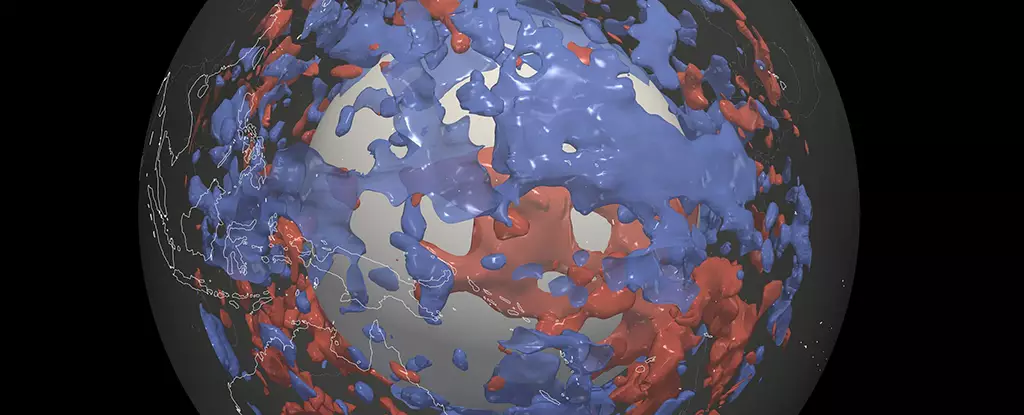The Earth is an intricate puzzle, with its composition and processes hidden beneath the surface. Utilizing seismic waves is akin to playing a game of detective—unearthing clues about the Earth’s internal structure. These waves, which are generated by earthquakes, can traverse through the Earth’s layers, revealing valuable information about its materials and formations. A collaborative research effort by ETH Zurich and the California Institute of Technology has recently advanced this field considerably, unveiling findings that challenge long-held assumptions about tectonic processes and the distribution of Earth’s materials.
For over a century, geoscientists have relied on seismic activity to create maps of the Earth’s underground features. Similar to how sound waves can vary in speed as they pass through different media, seismic waves behave differently depending on the types of sediments and rock layers they encounter. This phenomenon allows scientists to infer a wealth of information regarding the composition and architecture of the Earth’s interior. Traditionally, this mapping effort has been restricted by limitations in computational power and the types of seismic waves analyzed. However, with the unparalleled computational capabilities of the Piz Daint supercomputer, researchers have been able to unlock a more comprehensive understanding of the Earth’s lower mantle.
Disturbing Discoveries Beneath the Surface
The team’s fresh analysis revealed anomalous structures that resemble remnants of tectonic plates—displaced sections embedded within the lower mantle. These findings pose significant questions regarding Earth’s geological history and mechanics. The research highlights that these denser, cooler rock formations are appearing much farther from recognized subduction zones than previously anticipated. Not limited to locations traditionally associated with tectonic activity, these blobs of crustal material have been identified in regions like the western Pacific Ocean, suggesting a more complex and widespread distribution than what geologists had believed.
Challenging Conventional Understanding
Thomas Schouten, a prominent earth scientist from ETH Zurich, articulates that the observed formations in the lower mantle may originate from various processes, not solely tectonic subduction as has been commonly theorized. He underscores that the seismic waves represent merely one facet of what lies beneath—essentially the speed at which these waves travel. This single parameter may significantly simplify the complex reality of the Earth’s substructure. By diving deeper into the myriad of material properties that influence wave speeds, researchers can form a more nuanced picture of the Earth’s interior.
The implications of the identified layers could stem from two primary sources. One possibility involves ancient, silica-rich materials that have persisted since the early formation of the mantle, roughly 4 billion years ago. The other scenario suggests that areas enriched with iron-rich rocks may have gradually accumulated due to mantle convection processes over vast geological timeframes. This distinction is crucial as it can inform scientists about the history of Earth’s formation and the evolution of its structural integrity.
Looking Ahead: The Need for Further Exploration
While the findings are compelling, Schouten emphasizes the necessity for additional investigations to ascertain the precise nature of these peculiar structures beneath the Pacific. Each layer represents a potential geological narrative, a chapter in the Earth’s evolutionary tale that remains to be fully understood. Determining whether these anomalies are remnants of past tectonic activities or indicators of other geological phenomena will require a concerted effort and enhanced methodologies.
The revelations from the ETH Zurich and California Institute of Technology teams signify a transformative approach to studying the Earth’s depths. By harnessing advanced computational techniques to analyze seismic waves, scientists are beginning to unravel the mysteries surrounding the Earth’s composition and tectonic history. As research continues, it is clear that the Earth’s lower mantle retains secrets of a much more complex story than previously recognized. Understanding these complexities not only enriches our geological knowledge but also enhances our appreciation for the dynamic processes shaping the planet beneath our feet.


Leave a Reply